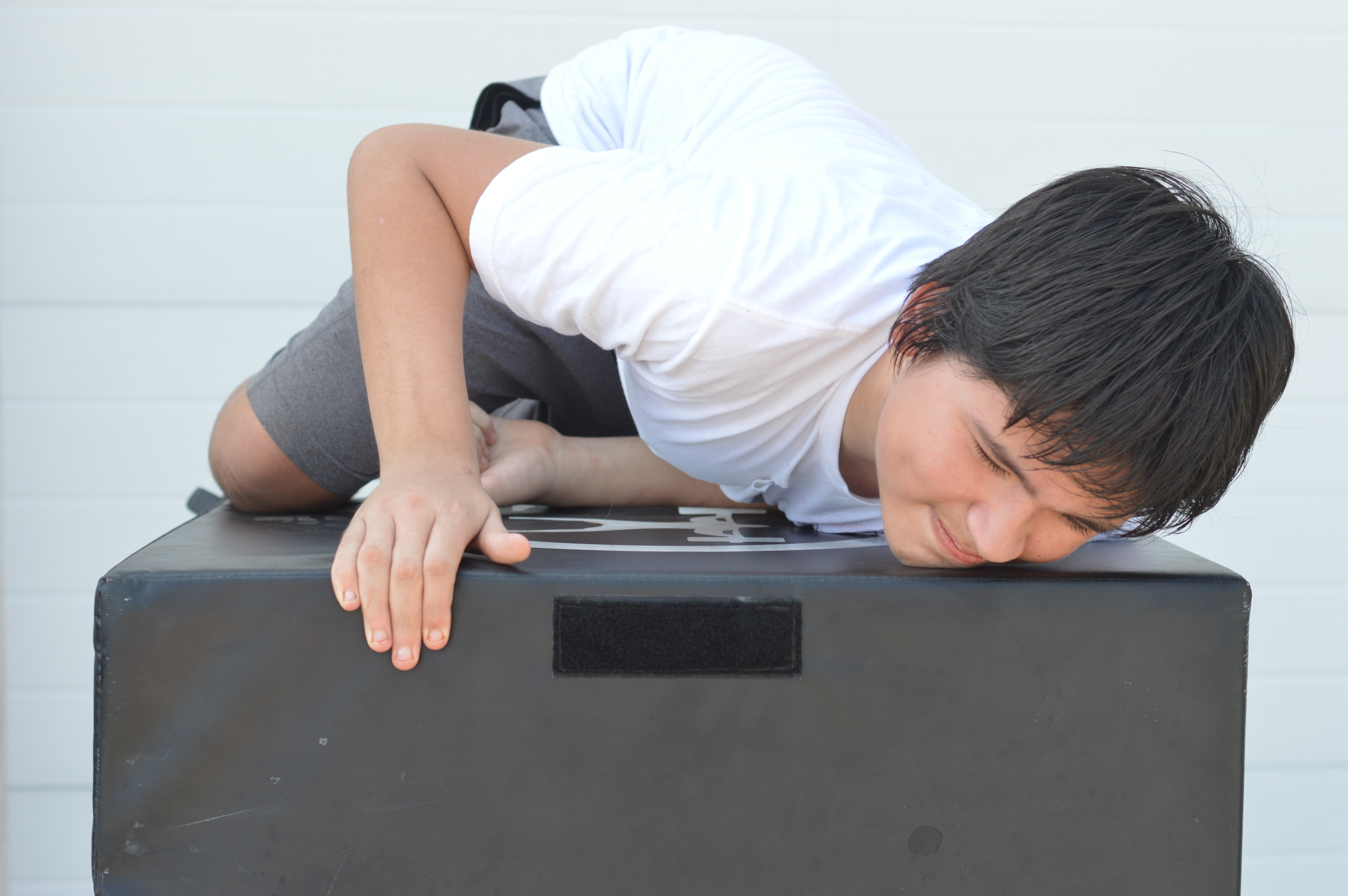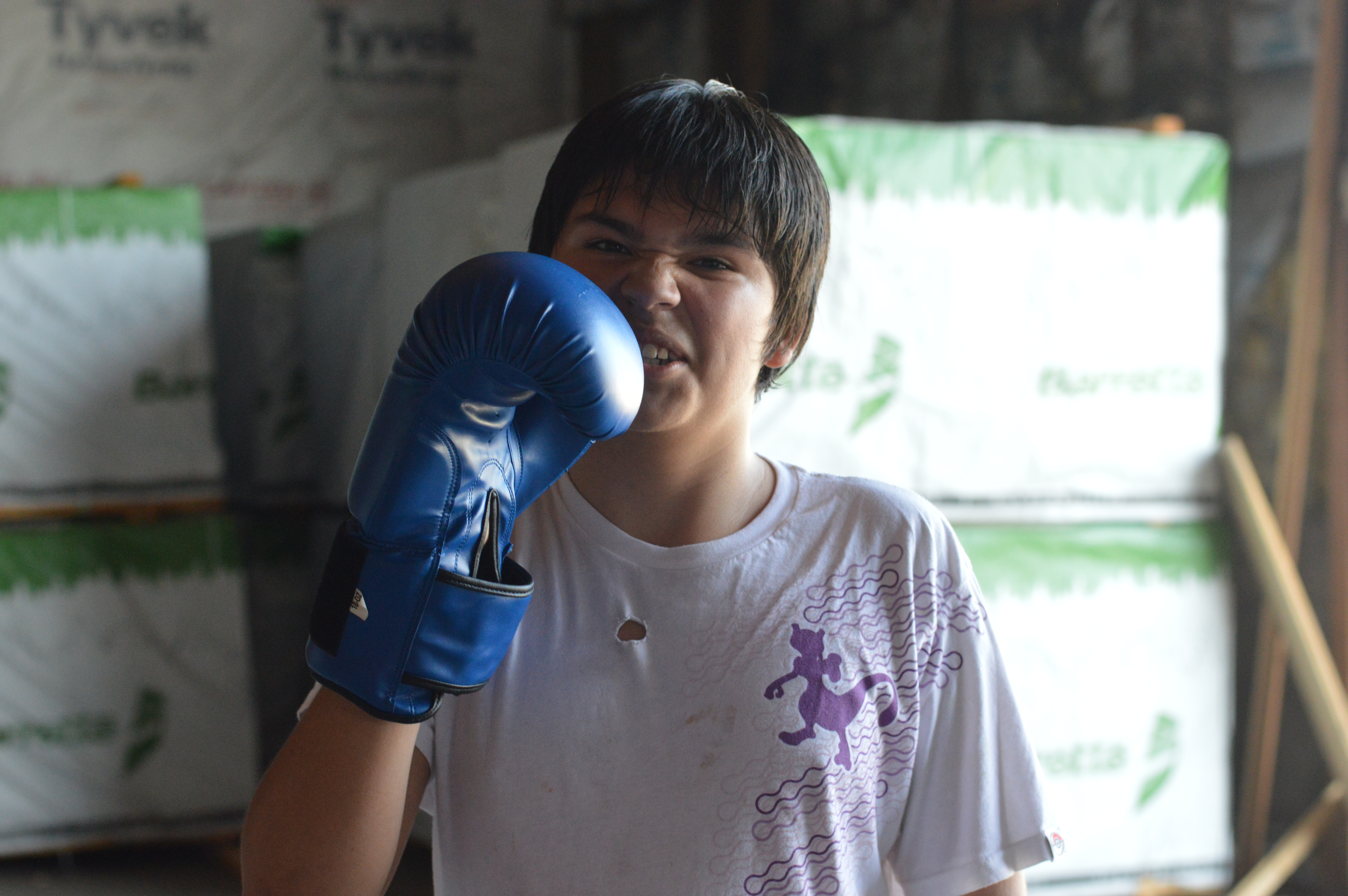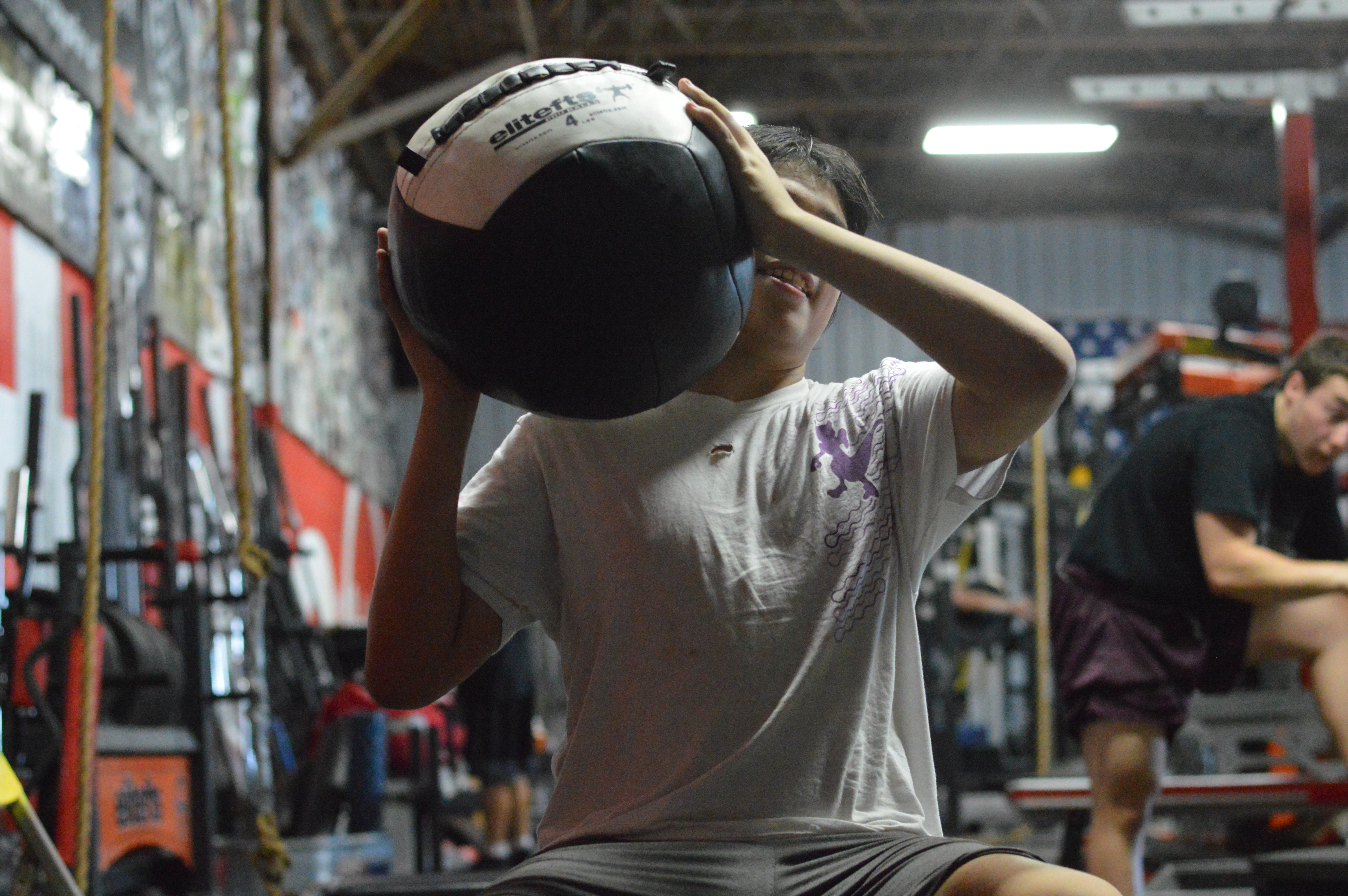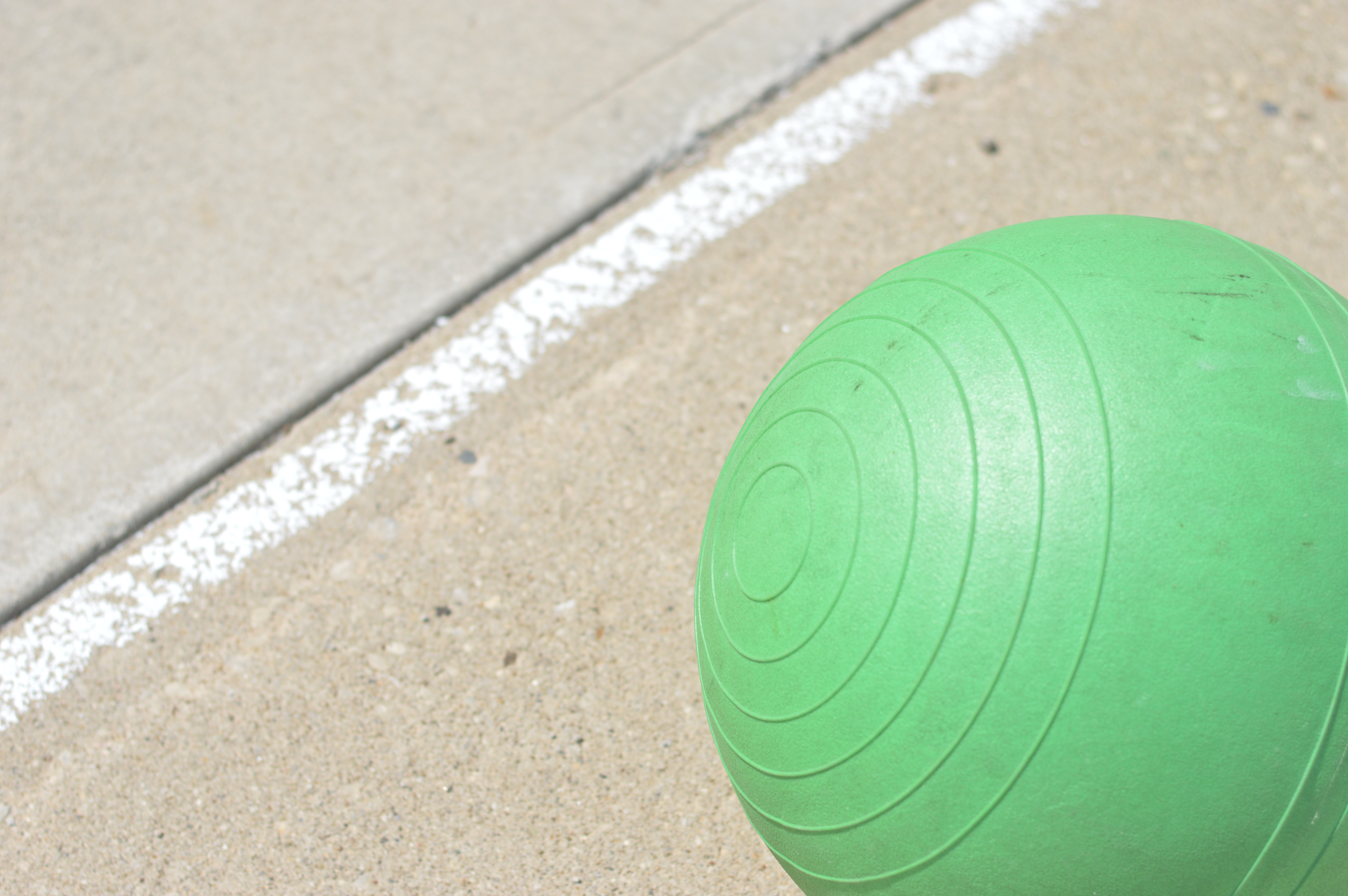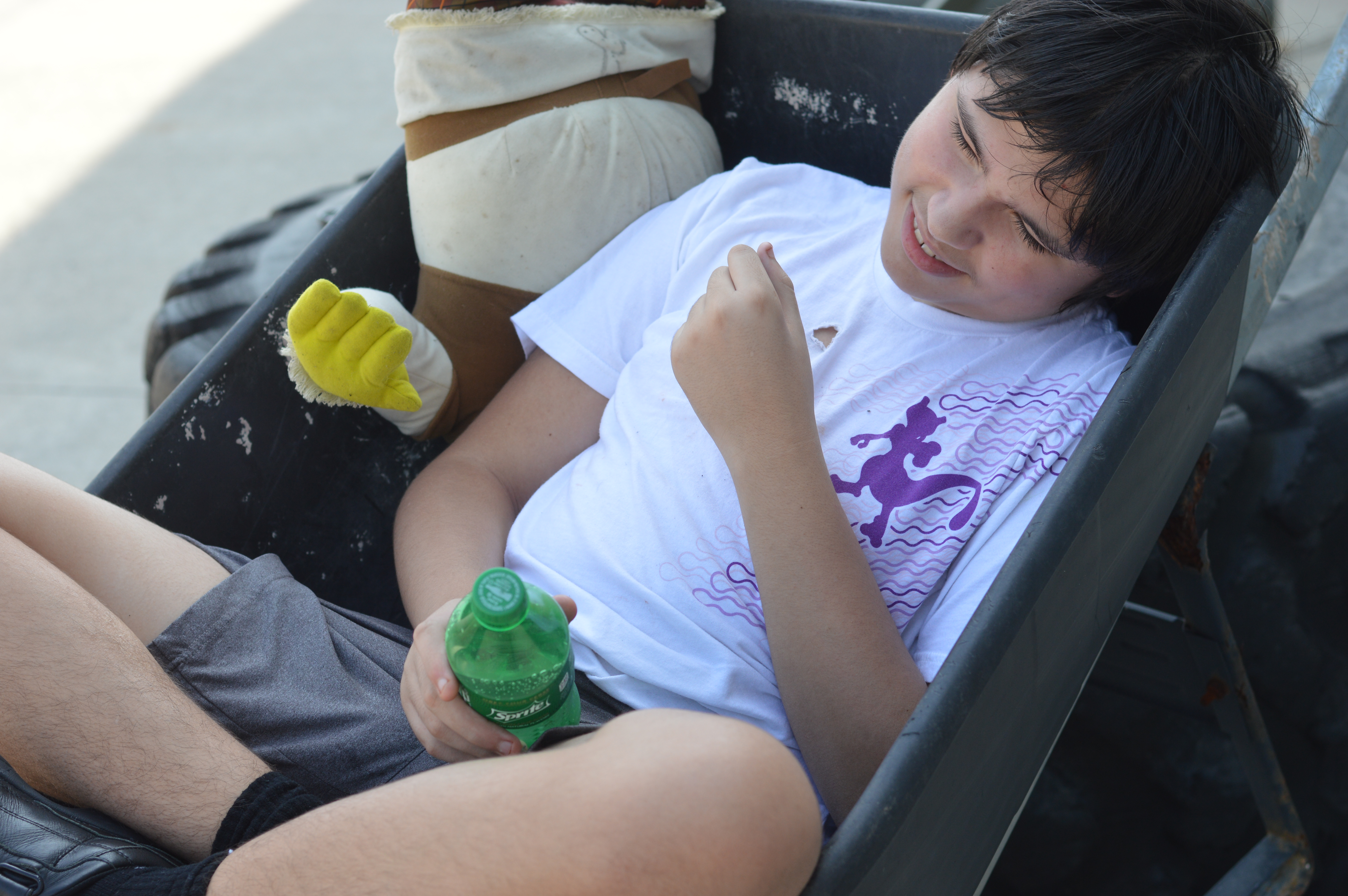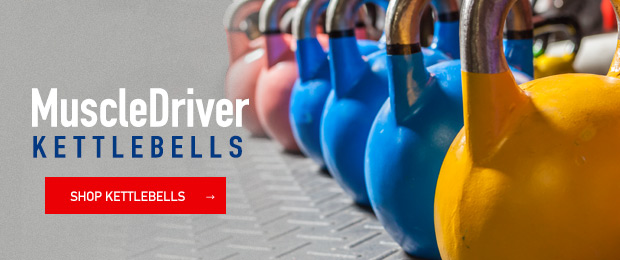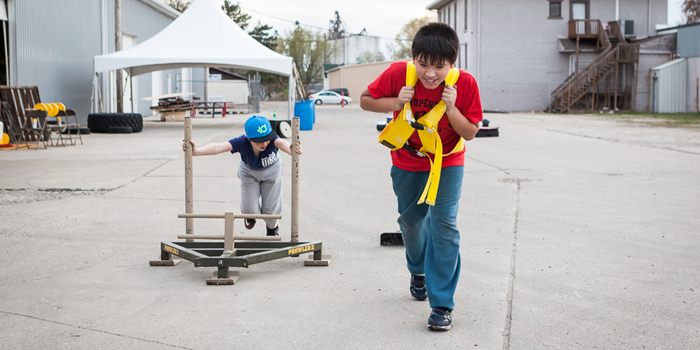
One element that cannot be forgotten when training children with special needs is the element of fun. Your definition of fun may differ from mine, but in the context of this article, I define it as answering the child’s “What’s in this for me?” question.
Think about it; if the child considers what you present to them as fun you are not only meeting their sensory processing needs but you are also creating an environment rich in engagement, self-regulation, and reward. Therefore, fun is ALWAYS personal, individual, and dynamic. It’s your job to make sure that its inclusion has meaning, is relevant (what works today may not always work for tomorrow), and ultimately gets everyone (you, the child, and parents) closer to the intended goals by amplifying the overall purpose of training.
Currently working with two boys on the autism spectrum, “fun” for one child is pushing a loaded wheelbarrow from one chalked line to another and then climbing inside to go for a ride. It’s pleasing and rewarding to him to see me struggle to push him forward, backwards, around in circles, and to anticipate me flipping the wheelbarrow over; we laugh, our actions are animated, and we’re startled, smiling and loud. After a few minutes of this exchange, we transition to the next challenge on the schedule with more energy and excitement.
For the other boy, “fun” is allowing him to assess my soccer skills and to give me coaching cues to better MY technique based on the lessons I taught him in the first half of the session. Our pace is slow, he’s methodical in his approach, we’re serious, closely paying attention, and we’ll repeat all processes until he’s satisfied with my performance.
RELATED 12-Week Program to Conquer the Monkey Bars
In the first example, the wheelbarrow ride is what’s motivating the boy’s feat of strength of carrying a loaded implement across the parking lot. It’s use then transfers over to the other planned exercises. In the soccer example, the child is placed in a role of authority to be the teacher with the ability to be super critical of the sport he’s trying to master, therefore it’s fun to pinpoint my flaws to learn how he can improve his own. In each case, fun is the chunk of time where we have the ability to really connect.
As you remember 4 Exercises Your Child Wants To Do and 4 More Exercises Your Child Wants To Do, here are six more exercises that use familiar equipment with a tweaked approach. The point is that you see how I’m listening to the children I work with so you discover MORE ways to connect with the children you work with. Eventually you’ll come to understand that the inclusion of fun is not a single exercise or a five-minute breather within a training session. Instead, its inclusion should begin and last the entire session.
1. Plyo-Box Stay On!
What You’ll Need:
- Stacked plyo-boxes (the amount of plyo-boxes depends on the height of the child and thickness of each box)
Stack plyo-boxes and secure with velcro strips. The child will climb on top of the plyo-box. He or she can sit or kneel as you tip the box, switching between the positions to stay atop. If the child falls off, he or she shouldn’t be too high off the ground that injury becomes a factor. As a guide, the child should be able to get on and off the boxes without assistance.
The point of this game is for the child to stay on top of the stacked boxes by changing body position to counteract the direction in which the box is tipped. The pace of the game and the need to stay atop the boxes will challenge grip, motor timing, balance, coordination, weight transfer, and strategy. In sessions to come, the positive association created by using plyoboxes will have transfer when using plyoboxes for box squats, step-ups, jumps, and other movements.
Plyo-Box Stay On provides tactile and proprioceptive input similar to that of a crash pad. The child jumps onto the plyo-box and constantly repositions his/herself to stay on as the box moves in multiple angles from slow to fast. Deep pressure against skin and joints is constant.
2. Band Tug of War
What You’ll Need:
With chalk, create a line to mark starting point. This will also serve as the line that each player is trying to avoid stepping over once the war begins. Center the orange band over chalked line. Step inside the band and secure one end around waist. Use the excess band to secure around the waist of the child (face each other). On command, each player will step backwards, trying to get the other player to step over the chalked line.
If you love rope tug of war and use it frequently as a way to train grip and engage muscles involved in eccentric, concentric, and isometric action, it’s nice to use a band to get a similar effect. The elasticity of the band causes these movements to be exaggerated and unpredictable; therefore balance and coordination become the main players as resistance fluctuates throughout the game. Change up the game and its emphasis by facing opposite directions.
Band Tug of War simulates the sensory feedback of a rebounder. In Blaine's case, he loves the constant tension of the band around his back and stomach as we move in opposite directions. The tension is then supersetted with the rebound effect as one person moves inward and we're dramatically forced to move from one direction to another.
3. “I Decline” Sit-Ups with Punch
What You’ll Need:
- Decline bench
- Boxing gloves
This is your standard decline sit up. The title itself is something that my clients laugh at. Blaine in particular will go back and forth about how he shouldn’t have to do it because he declines. This automatically lightens the mood and therefore he’s more apt to doing it because he’s focused on the formality of the exercise rather than the abdominal discomfort he’ll feel after a few reps. So, the title itself gets us to the exercise (in which some days is a huge thing). Once we get to the bench, the second tweak is providing Blaine with punching gloves. For each rep, Blaine then has the chance to punch my block at the top end.
This particular exercise includes two tweaks because there are two crucial points that have effect on whether or not the exercise will be completed. In each case, the emphasis changes, therefore there are more pros than cons that end up making this exercise “worth it.” The purpose of this exercise is for the child to complete the sit-up (as the punching adds the fun factor that may have further implications down the road). For example, eventually the sit-ups can be loaded using a medball, separate from the punches. A punching bag or boxing match may then be a follow-up activity of its own. What is built is the association between the two, which gives us more options at play once progression is suitable.
The component of punching the block is a great opportunity to provide the proprioceptive input that the child may crave. I've found that this opportunity lessens what would appear to be aggressive behavior if otherwise not attended to. In this case, punching the block or another pair of gloves is appropriate behavior rather than the child punching another not intending to be hit. Feel free to exchange the sit up portion with another exercise but then couple the exchange with the punching.
4. Medball Eagle Spread Juggling Act
What You’ll Need:
Have players sit foot to foot in an eagle-spread stance. Each player has a medball in hand. Begin with a non-weighted ball until a weighted ball is appropriate for use (once pushing small of back in ground through descent and assent become natural). Each player leans back with a ball on chest until the lower and upper back rests on the floor. As the players return to the seated upright position, each player throws their ball to the other player. Before throwing, decide who will make the high pass and who will make the low pass. Switch roles. Repeat the leaning back, sitting up, throwing and catching sequence for as many reps necessary.
This is another variation we like to use that can be done anywhere, indoors or outdoors. We remain engaged because both of us have to work efficiently and together to allow the set to continue. Keep distance between players close so each player completes pass without excessively leaning forward.
Each time the medball is caught, it provides pressure against the body as is it rolls from the stomach to the chest, chest to stomach, potentially making contact with the skin of the legs, forearms, neck and chin. Similar to the decline situps, this coupling feeds the other, therefore the work is worth the effort. Feel free to exchange the sit up portion with another exercise but then couple the exchange with the medball body rolling.
5. Big 2-Square/ Big 2-Square Soccer
What You’ll Need:
- Chalk
- Rubber Kick ball
Use chalk to create two large squares side by side. Follow the standard 2-square rules. As a refresher, the initial rules to keep in mind are:
- Two players (one opponent in each square) will face each other.
- One player will serve the ball to the other by bouncing the ball one time in his or her square and then hitting the ball underhand to the opponents square.
- The other player will underhand hit the ball once to return the ball in the opponents square.
- If the ball lands on the line or out the square, it is an out.
This game has been used as a session warm-up and also as a game mid session. It’s a great way to include some competition, especially if this is something you’re working on: keeping score, winning, losing, and acceptance of each. This game hones in on force control, awareness of space, speed, game strategy, footwork, agility, and aim. Changing the rules up a bit, Big 2-Square Soccer follows the same rules above but the ball is passed using the head, shoulder, chest, knees, and foot. This game forces the child to remain in a defensive position with attention to ball control.
6. Wheelbarrow Carry and Ride
What You’ll Need:
Use cones to mark start and end point. If appropriate, add desired amount of weight inside wheelbarrow. Model to the child how to set his or her feet, grip handles, stand up, and walk forward from one cone to the other. After the child carries the wheelbarrow for the desired length (forward or backward), have the child climb inside the wheelbarrow as you carry the wheelbarrow along a path or in multiple directions (rock back and forth, spin in circles, etc.).
This exercise came to fruition one day when Blaine was especially sensitive to the sound of metal sliding against pavement. Although there are times I can push past his comfort zone, this was not the moment to encourage Blaine to ignore his senses—in two years this was the first time that the sound affected him negatively. Flexibility gave us permission to find an alternative exercise without sound effects, try something new, and sparked an idea to then end the exercise with a ride. The ride became quite the motivator to listen to directions and move the load from cone to cone. This exercise will have future implications when moving a load off the ground because now I can make the association to this coupling and remind him how to get feet set, grip the implement, keep upright while pushing hips back, and lift.
The Wheelbarrow Ride (the rocking, spinning, and sliding) simulates sensory input as a swing, spinning disk toy, and sled does. Feel free to exchange the wheelbarrow carry with another exercise but then couple the exchange with the wheelbarrow ride.
As you can see from the exercises above, every single one of them is personal, individual, and dynamic, finally answering the child's “What’s in this for me?”
As I see it, if fun is the last thing on your mind when programming for the child with special needs, please be aware and consider how fun creates a special connection between you and the child. It applauds small and often overlooked change and highlights minuscule improvement as a positive experience, ultimately fine-tuning behavior and motor responsiveness, competence, and confidence. As you repeatedly engage in these opportunities, the child will reach/surpass the purpose of training and be thrilled each and every step.









